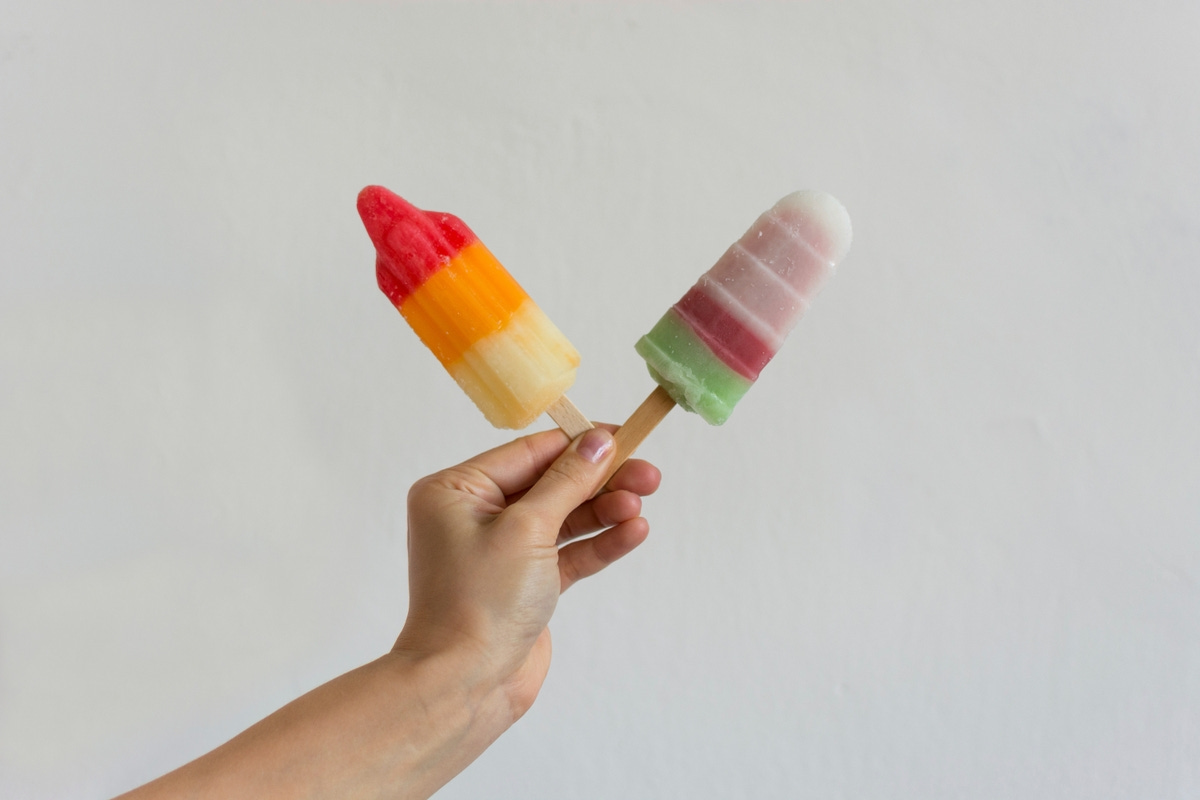A frozen fruit juice ice thingy. Whether you call them popsicles or ice pops or ice lollies seems to be a country specific thing.
In Dutch ‘waterijsje’ - yes, that’s water ice or more specifically little water ice - would be the most common name.

The usual kids recipes seem to go ‘freeze fruit juice’ and that’s it. Or freeze fruit puree. Which is fine if you’ve got a toddler and you want to give them something refreshing in the middle of Summer but not if you want something that tastes like you bought it.
Supermarket ones aren’t crunchy or full of ice crystals. You can’t suck all the flavour out of them and be left with just chunks of ice the way you could with just frozen fruit juice.
I remember these waterijsjes, I think they were called ‘shooters’. I can’t find them anywhere so I don’t actually know if they were called that or something else. They were these little citrus flavoured balls in a pot shaped like, for want of a better description, a dustbin with a twist-open top. They did not come with instructions on how to actually eat them.
There are two main reasons for ending up with crunchy, slightly yucky ice pops. First, a freezer needs to be able to freeze quickly and to -18C/below 0F.
The second is too much water. I got thinking about how I could make my own waterijsjes without the yucky bits and realising what it needed was no water, no water, no ice.
So the trick is to make sure there is no water. You do that by starting off with syrup instead. Yes, this is a sugary ice pop but we’re recreating a store-bought popsicle here, not a basic homemade one.

technique
Make a syrup from %50 sugar and %50 water. So say 50g of water and 50g of sugar, stir and leave on the heat until syrupy.1
Grab your fruit of choice; peel and chop as required, and cook until soft. Mash/blend or pass through a sieve as needed. Combine with the syrup and cook through for a minute or so. Leave to cool and pour into moulds.
Freeze.
The reason this works is because of the sugar in the syrup, it binds the water in the fruit as well as obviously the actual water. Bonus points for adding glucose syrup, invert syrup or dextrose. Those sugars bind even more water so in theory you could add those and use less sugar overal with the same effect.
You can use any decently ripe fruit or even ready-made coulis or those smoothie packs you can buy.
In terms of ratios, I feel like I remember doing half syrup/half fruit puree but that feels like a lot. You can start out adding less and see how you go. Remember that things will always taste less sweet once fully frozen and that we’re going for texture and flavour here, not low-sugar. These waterijsjes are a treat for once in a while. Actually enjoy them.
Do let me know how you get on!
We’ve been on a bit of an unintentional break over here but it has been a year since I started writing these articles! Woohoo!
If you haven’t yet, do take a look at the archive! It has quite a few gems of articles in there if I say so myself. Different kinds of Belgian waffles, an article on Belgian pies, different traditions…
If you’ve enjoyed reading my articles and feel like you want to share some of that joy with me in a monetary value, you can do so here.
We should have had the Summer baking bundle out now and this article would have been a part of it, we’d be talking all about fresh fruit recipes. I’ve unexpectedly been dealing with some things so no Summer bundle yet. These bundles are my income and do fund this thing so if you want to do leave a little something through that link, please do.
This recipe https://jeffreymorgenthaler.com/simple-syrup/ explains how to make a stronger simple syrup using pounds. The conversion to grams is a little overwhelming if you’re not familiar with weight measurements but the explanation is great. I leave my syrup on the heat for a little longer than you normally would for a simple syrup so this recipe is probably closer to my ratios of fruit/sugar/water.


Oh I didn't know that. Thanks so much for sharing. I also remember being able to suck the juice out too.